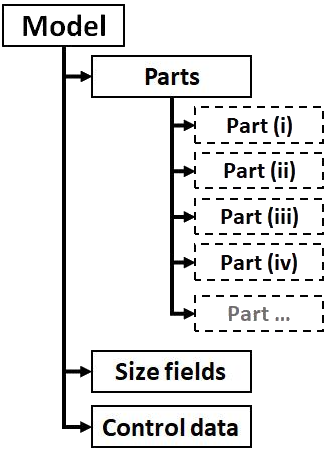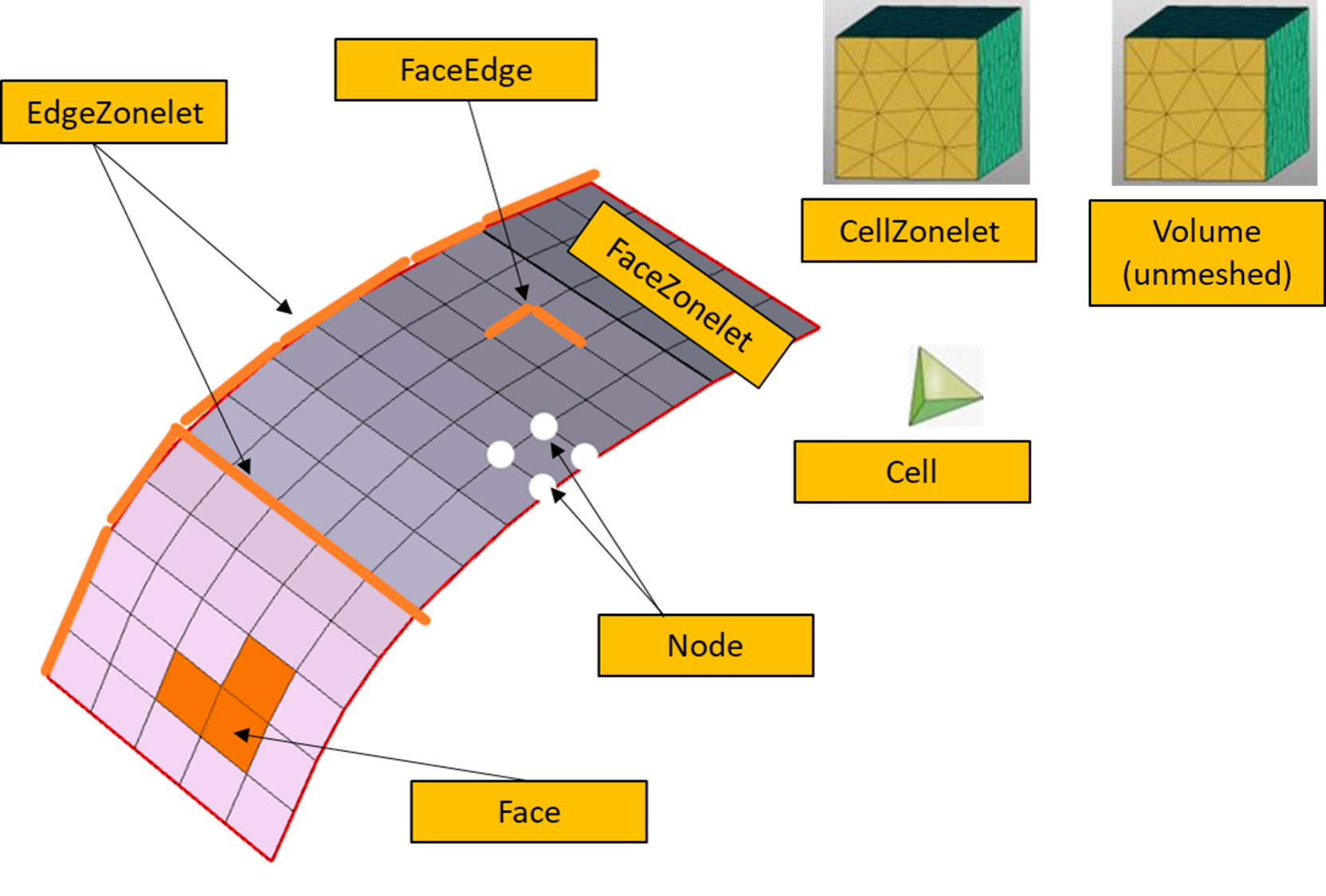Concepts and model structure#
Model#
The Model class is the top-level container for PyPrimeMesh.
It contains all information about the PyPrimeMesh session.

Model structure#
This code shows how the Model class is accessed from the
Client class:
import ansys.meshing.prime as prime
prime_client = prime.launch_prime()
model = prime_client.model
This code imports a CAD file containing a single part:
cad_file = prime.examples.download_elbow_scdoc()
params = prime.ImportCadParams(model)
prime.FileIO(model).import_cad(file_name=cad_file, params=params)
The code prints the Model class to obtain a summary
of the current session:
>>> print(model)
Part Summary:
Part Name: flow_volume
Part ID: 2
13 Topo Edges
9 Topo Faces
1 Topo Volumes
0 Edge Zones
Edge Zone Name(s) : []
0 Face Zones
Face Zone Name(s) : []
1 Volume Zones
Volume Zone Name(s) : [volume]
2 Label(s)
Names: [inlet, outlet]
Bounding box (-203.2 -228.6 -50.8)
(203.2 203.2 50.8)
Parts#
Geometry topology and mesh data in the Model class is stored
within any number of parts parameters:
model.parts
Each Part class can contain TopoEntities or zonelets.
TopoEntities are TopoParts created from CAD geometry imports. Zonelets are mesh parts created
from faceted geometry and mesh imports. TopoEntities and zonelets are characterized by the
dimension of entities.

Part types#
TopoEntities#
TopoEntities are created from importing a CAD geometry and represent connectivity information. TopoEntities have geometric representation that can be defined by splines or facets. The mesh generated on TopoEntities are projected on the geometry representation.
There are four types of TopoEntities:
TopoNode: TopoEntity representing points
TopoEdge: TopoEntity representing curves
TopoFace: TopoEntity representing surfaces
TopoVolume: TopoEntity representing volumes

TopoEntities schematic#
Zonelets#
Zonelets are created from importing mesh files and are groups of interconnected entities in a mesh.
There are three types of zonelets:
FaceZonelet: A group of interconnected faces
EdgeZonelet: A group of interconnected edges
CellZonelet: A group of interconnected cells
A volume is a set of face zonelets that define a closed volume without containing any cell elements.

Zonelets schematic#
Zones#
Zonelets or TopoEntities can be further grouped into zones. A zonelet or TopoEntity can only be present in a single zone.
When exporting a mesh (MSH or CAS) file to the Fluent solver, you should define the boundary conditions for the zones.
When importing a Fluent solver model, each zone is defined as a single zonelet.
Labels#
Labels allow overlapping groups of zonelets or TopoEntities.
When importing CAD files, each group or named selection generates a label.
When exporting to a Mechanical solver (CDB) file, each label is exported as a component.

